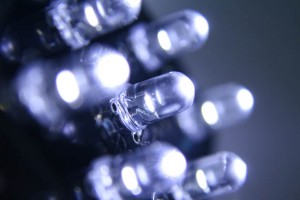A couple of reports out this week from Sandia National Lab nicely illustrate the dilemmas of reducing resource use. They also illustrate that more and more thinkers are catching on that Compression is a real, looming challenge.
 The first report is on lighting. LEDs use about 20% of the power of incandescent lights, but this varies by application. Although data are crude, the authors estimated that societies on average had spent 0.72% of their GNP on lighting for the past three centuries, despite all the revolutions in lighting technology. So if societies continue to do that and switch to LEDs, people will buy a lot more LEDs and try to “light up the sky.” Total power saved might be zero.
The first report is on lighting. LEDs use about 20% of the power of incandescent lights, but this varies by application. Although data are crude, the authors estimated that societies on average had spent 0.72% of their GNP on lighting for the past three centuries, despite all the revolutions in lighting technology. So if societies continue to do that and switch to LEDs, people will buy a lot more LEDs and try to “light up the sky.” Total power saved might be zero.
The conclusion that unit efficiency can be offset by multiplying the number of units is not affected by ongoing debates on exactly how efficient LEDs are or will become.
The second report made the same point about automobiles. If fuel economy dramatically improves, but more vehicles drive more miles, total energy savings may be nil. At least one commentary on this site makes the same point, that improved per unit efficiency is easily overwhelmed by growth in units used. In addition, to accommodate more and more vehicles, we must also put more resources into the infrastructure (roads, bridges, parking) to accommodate them. This tendency illustrates how tough the Compression challenge of reducing total energy consumption could be. If it involves shifting deep-seated behavior, not just technical substitution, it’s a tall leap indeed.
